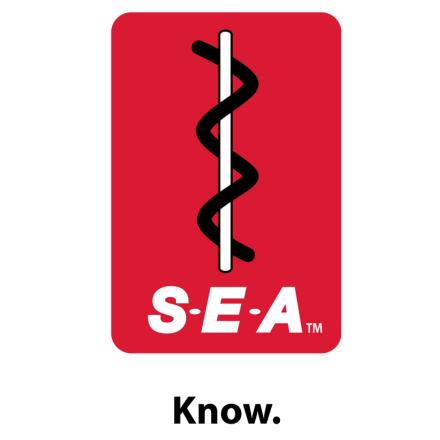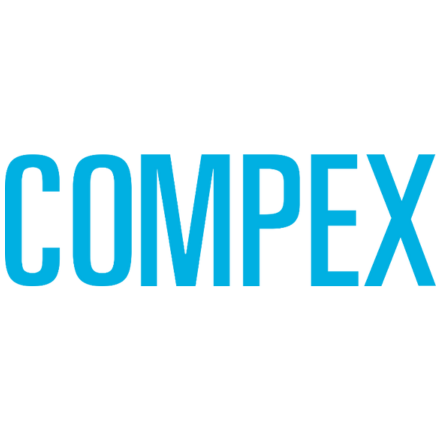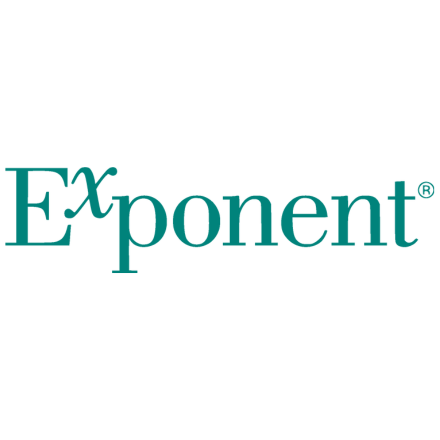Overview Maryland Court SystemAt Themis Advocates Group, we are committed to providing invaluable resources to members and clients alike. A. Maryland Trial CourtsMaryland has District Courts and Circuit Courts. District Courts are smaller claim courts and have jurisdiction up to $30,000. All District Court cases are bench trials. District Court cases for $5,000 and under are small claims trials, which proceed without formal rules of evidence. Circuit Courts in Maryland have jurisdiction for anything over $15,000. Circuit Court cases are normally heard by a jury, unless the parties waive the right to a jury. STATE TRIAL COURTSAllegany County:Type of jurisdiction - Rural (Far western panhandle of Maryland) Circuit Court:
Comments: The Circuit Court for Allegany County has two judges. The region is mountainous and country-oriented. The juries tend to be middle to lower-income and are conservative. District Court (no jury / bench trials only):
Comments: The District for Allegany County has two judges. Anne Arundel County:Type of jurisdiction - Suburban/rural (Annapolis, Maryland) Circuit Court:
Comments: The Circuit Court has eleven judges. Mediation is mandatory in the Circuit Court. The juries tend to be upper middle- income to affluent. District Court (no jury / bench trials only):
Comments: The District Court has eight judges. The judges tend to be less conservative than the juries. Baltimore CityType of jurisdiction - Urban (biggest city in Maryland) Circuit Court:
Comments: The Circuit Court has thirty-one judges. As to be expected in a large city, there are many working class and lower- income individuals that make up the bulk of the jury pools. While all professionals work in the city, they commute home to the suburbs. Crime remains high. District Court (no jury / bench trials only):
Comments: The District Court has twenty-seven judges. There is a stark contrast between trying a case before a district court judge and a jury in Baltimore City. The judges are surprisingly conservative for an urban setting. Baltimore CountyType of jurisdiction - Suburban (North of Baltimore City) Circuit Court:
Comments: The Circuit Court has seventeen judges. The juries tend to be middle to upper middle-income persons. District Court (no jury / bench trials only):
Comments: The District Court has thirteen judges. The awards rendered by the judges tend to be a little less conservative than the juries. Calvert CountyType of jurisdiction - Rural (Southern Maryland, on Chesapeake) Circuit Court:
Comments: The Circuit Court has two judges. Summary judgments do not get granted very often. The region is traditionally rural and agricultural. However, it is experiencing rapid growth from families moving in from the closer-in Washington, D.C. suburbs. The juries tend to be middle-income and conservative. District Court:
Comments: There is only one judge in the District Court, and his awards tend to be more liberal than those of the juries. Caroline CountyType of jurisdiction - Rural (Eastern Shore) Circuit Court:
Comments: The Circuit Court has one judge. The juries tend to be middle to lower middle-income. The region is agricultural. District Court:
Comments: The District Court has one judge. Carroll CountyType of jurisdiction - Rural (on Pennsylvania border) Circuit Court:
Comments: The Circuit Court has three judges. The area is traditionally rural but is growing with families moving from the closer-in Baltimore suburbs. District Court:
Comments: The District Court has two judges. Cecil CountyType of jurisdiction - Rural (on Pennsylvania border) Circuit Court:
Comments: The Circuit Court has three judges. The juries tend to be middle-income. District Court:
Comments: The District Court has two judges. Charles CountyType of jurisdiction - Suburban/rural (Southern Maryland) Circuit Court:
Comments: The Circuit Court has four judges. This is another traditionally rural area with some agriculture. It too is experiencing growth from families moving further out from the Washington, D.C. suburbs. District Court:
Comments: The District Court has two judges. The awards of the judges tend to be less conservative than the jury awards. Dorchester CountyType of jurisdiction - Rural/agricultural (Eastern Shore) Circuit Court:
Comments: The Circuit Court has one judge. The region is agricultural with large farms and watermen. Juries tend to be middle-income. District Court:
Comments: The District Court also has just one judge, and he is generally very conservative in cases involving personal injury. Harford CountyType of jurisdiction - Rural/suburban (borders Pennsylvania) Circuit Court:
Comments: There are six Circuit Court judges. Traditionally a rural area, Harford County is becoming more suburban as families move further out from the Baltimore suburbs. The juries tend to be middle-income. District Court:
Comments: There are four District Court judges. Their awards tend to be moderate. Howard CountyType of jurisdiction - Suburban (between Baltimore and D.C.) Circuit Court:
Comments: There are five judges on the Circuit Court. The region is middle-income to affluent and has workers commuting to both Baltimore and Washington, D.C. District Court:
Comments: There are five judges on the District Court. Kent CountyType of jurisdiction - Rural (Furthest county on Eastern Shore) Circuit Court:
Comments: There is one Circuit Court judge. The region is agricultural and juries tend to be middle to lower middle-income. District Court:
Comments: There is one District Court judge. Montgomery CountyType of jurisdiction - Suburban/Affluent (North of D.C. on Virginia border) Circuit Court:
Comments: There are twenty-one Circuit Court judges. Montgomery County is a culturally-diverse region, ranging from urban areas closer to Washington, D.C. with lower-income persons to very affluent suburbs to more rural areas with some farmland at its outer reaches. The juries tend to be well educated, but if they find causation, they may be willing to give a high verdict. District Court:
Comments: There are eleven District Court judges. As a group, the judges cannot be classified with one etiology. There are some who tend to be more conservative than the others, and others who tend to be more liberal than the others. Prince George’s CountyType of jurisdiction - Urban/suburban (surrounds D.C.) Circuit Court:
Comments: Prince George’s County is the second largest jurisdiction in Maryland with twenty-three judges. Many of its residents are federal government employees. The county has in recent years experienced troubles with its schools and with crime. The juries tend to be middle-income and liberal to moderate. District Court:
Comments: The District Court has fifteen judges. The dockets are frequently overbooked, and it is not rare for a trial to be continued by the court on the day of trial because of too busy of a docket. Continued cases are being scheduled 4-10 months later. The judges are quite busy in District Court and appreciate anything that speeds a case along. Queen Anne’s CountyType of jurisdiction - Rural (Eastern Shore) Circuit Court:
Comments: The Circuit Court for Queen Anne’s County has one judge. While this region is still considered rural, there is an increased number of retirees from the Baltimore and Washington, D.C. areas, as well as a growing number of individuals moving to this area from the Baltimore and Washington, D.C. areas and continuing to work on the western shore. The juries tend to be middle to upper-income and conservative. District Court:
Comments: There is one District Court judge in Queen Anne’s County. St. Mary’s CountyType of jurisdiction - Rural (furthest Southern county) Circuit Court:
Comments: The Circuit Court for St. Mary’s County has three judges. While this region is primarily rural and agricultural, it has a sizeable contingent of military at the Patuxent River Naval Base. Juries tend to be middle-income. District Court:
Comments: The District Court has only one judge. Somerset CountyType of jurisdiction - Rural (Eastern Shore) Circuit Court:
Comments: The Circuit Court has one judge. This region is primarily populated with farmers and watermen. The juries tend to be middle to lower middle-income. District Court:
Comments: There is only one District Court judge. Talbot CountyType of jurisdiction - Rural (Eastern Shore) Circuit Court:
Comments: The Circuit Court has one judge. The region is primarily agricultural and rural with the juries tending to be middle- income. District Court:
Comments: There is only one judge in the District Court. Washington CountyType of jurisdiction - Rural/mountainous (Western panhandle) Circuit Court:
Comments: The Circuit Court has five judges. The residents of the region primarily tend to be in agriculture and industry. The juries tend to be middle-income. District Court:
Comments: There are only two District Court judges. Wicomico CountyType of jurisdiction - Rural (Eastern Shore) Circuit Court:
Comments: The Circuit Court has three judges. The majority of residents live in the Salisbury area which is a medium-size city. The juries tend to be middle-income. District Court:
Comments: There are two judges in the District Court. Worcester CountyType of jurisdiction - Rural (Eastern Shore) Circuit Court:
Comments: There are three judges in the Circuit Court. While the area remains primarily agricultural, there are a sizeable number of retirees from the Washington, D.C. and Baltimore regions which now take up residence in the areas near the Maryland beaches. This region is home of the popular vacation destinations of the Maryland beaches. During the summer months, the population of Ocean City, Maryland increases into the hundreds of thousands. District Court:
Comments: The District Court has two judges. STATE APPELLATE COURTSCourt of AppealsJurisdiction: All civil and criminal matters. Right of appeal: By petition for writ of certiorari. Time to decision: 6 months Comments: The Maryland Court of Appeals is the Supreme Court in Maryland. It always sits in banc (with all seven members). It sits nine months out of the year, taking off the summer. The only case that has an automatic right of appeal to the Court of Appeals is a death penalty criminal case. Short of that, a civil case is only heard when the court removes an appeal from the Court of Special Appeals or when the court grants a petition for writ of certiorari. If a party loses in Court of Special Appeals, they can file a Petition for Writ of Certiorari requesting that the Court of Appeals review the lower court’s decision. Based on statistics kept by the Court of Appeals, the court grants one out of every seven petitions. On the average, 700 petitions were filed over the past three years and approximately 110 were granted. It normally takes the Court of Appeals a minimum of six months to publish an opinion. Most, but not all, of the Court’s opinions are published. Court of Special AppealsJurisdiction: All civil and criminal matters. Right of appeal: As a matter of right - automatic. Decision Time: 4 to 6 months Comments: The Maryland Court of Special Appeals is the intermediate appellate court in Maryland. The Court of Special Appeals is comprised of thirteen judges from appellate districts throughout the State of Maryland. They sit in groups of three. One of the three judges is normally assigned to write the opinion before oral argument. An appeal to the Court of Special Appeals must be filed within 30 days of the entry of judgment from the trial court. The court will then decide whether the case should be set in for a pre-hearing conference. A Scheduling Order will be entered into where the Appellant (the party appealing) will be assigned a date to have their brief filed. The Appellee then has 30 days to file a response thereafter. Hearings are normally set approximately six months later. It takes an additional four to six months to get an opinion. Most Court of Special Appeal’s opinions are unreported (and therefore hold no precedential value other than the case at hand). From start to finish, the appeal process is normally fourteen to sixteen months. Since a losing party has the automatic right of appeal, the Court of Special Appeals is inundated with both civil and criminal appeals. As a result, most opinions are case specific and may be unpublished. FEDERAL TRIAL COURTSUnited States District Court for the District of Maryland, Northern, Division, BaltimoreChief Judge: James K. Bredar Clerk of the Court: Felicia Cannon Type of Jurisdiction: The Northern Division ranges from rural to urban and is comprised of the following counties: Garrett, Allegany, Washington, Frederick, Carroll, Baltimore, Harford, Cecil, Montgomery, Howard, Kent, Queen Anne’s, Talbot, Caroline, Dorchester, Wicomico, Somerset, Worcester, and Baltimore City. Typical Jury Verdicts: Moderate to conservative Time to Trial: 12 to 14 months Comments: The Northern Division is comprised of eight judges and six magistrates. United States District Court for the District of Maryland, Southern Division, GreenbeltType of Jurisdiction: The Southern Division is suburban and is comprised of the remaining Maryland counties of: Anne Arundel, Prince George’s, Charles, Calvert, and St. Mary’s. Typical Jury Verdicts: Typically, the Southern Division is slightly more conservative than the Northern District. Time to Trial: 12 to 14 months Comments: The Southern Division represents a smaller geographic area and is comprised of four judges and four magistrates. FEDERAL APPELLATE COURTUnited States Court of Appeals for the Fourth CircuitLocation: Richmond, Virginia Circuit Justice: John G. Roberts Chief Judge: Roger L. Gregory Jurisdiction: All civil and criminal matters Right of Appeal: As a matter of right – automatic Time to Decision: 1 to 2 years B. Appellate CourtsAppeal From the District Court District Court to Circuit Court - Any party in a civil case may appeal by filing an order for appeal with the clerk of the District Court within 30 days from the date of the final judgment. In a small claims case, the appeal will be heard de novo as if there had never been a prior hearing or judgment. In a controversy which exceeds $5,000, the appeal will be heard on the record. MD. CODE ANN. §§ 12-401 to 12-404. To secure appellate review in the circuit court, a notice of appeal must be filed with the clerk of the District Court within 30 days after entry of the judgment or order denying the motion. The party requesting the appeal will be required to pay the clerk the cost of preparing a transcript, if a transcript is necessary (cases heard on the record). The transcript must be ordered, in writing, from the clerk of the District Court within 10 days after the date the first notice of appeal is filed. The transcript must contain: a transcript of all testimony or that part of the testimony that the parties agree is necessary for the appeal and; transcription of any other proceeding relevant of the appeal pursuant to Rule 16-504. Obtaining a transcript could take up to several months, thereby making an appeal from the District Court to the Circuit Court a very lengthy process. Appeal from Circuit Court Circuit Court to Court of Special Appeals - To secure an appeal to the Court of Special Appeals from the Circuit Court, a notice of appeal must be filed with the clerk of the Circuit Court within 30 days after entry of the judgment or order from which the appeal is taken. A filing fee will be charged and must be paid. The appellant (party making the appeal) must order a copy of the transcript in writing from the court stenographer within 10 days after the date the first notice of appeal is filed in all other actions or after the date of an order pursuant to Md. Rule 8-411. Court of Special Appeals to Court of Appeals - To secure appeal to the Court of Appeals from the Court of Special Appeals, generally, a writ of certiorari is required. (See Rule 8-301 for the other two methods). A petition for writ of certiorari may be filed either before or after the Court of Special Appeals has rendered a decision, but not later than 15 days after the Court of Special Appeals issues its mandate. The petition will contain the information set forth in Md. Rule 8-303(b)(1)(A)-(E), and upon submission of the petition the Court of Appeals will grant or deny the appeal. ProceduralA. VenueGenerally Venue is covered under Md. Cts. & Jud. Proc. §6-201. In civil actions the action should be brought in a county where the Defendant resides, carries on a regular business, is employed or habitually engages in a vocation. In addition, a corporation also may be sued where it maintains its principle offices in the State. If there are multiple defendants then the preference is a venue where all defendants can be sued. If there is more than one defendant and there is no single venue applicable to all defendants then all defendants may be sued in a county in which any one of them could be sued, or in the county where the cause of action arose. Md. Statute Cts. & Jud. Proc. Article §6-202 provides places for additional venue. These include where the Plaintiff resides when a corporation has no principle place of business in the state, where the cause of action arose for a tort claim based on negligence, and any County in the State when the action for damages is against a non-resident individual. B. Statue of LimitationsIn general, a civil action at law shall be filed within three years from the date it accrues unless another provision of the Code provides a different period of time within which an action shall be commenced. Md. Code Ann., [Cts. & Jud. Proc.] § 5-101 (1999). In the past, Maryland applied a "date of the wrong" rule to determine when a cause of action accrues; now, Maryland generally applies the discovery rule, which provides that a cause of action accrues when a plaintiff in fact knows or reasonably should know of the wrong. Martin Marietta Corp. v. Gould, Inc., 70 F.3d 768 (4th Cir. 1995). For medical malpractice cases, there is a three year statute of limitations from date of discovery, or a five year statute of limitations from the date of the injury, whichever is shorter. Maryland Code, Cts. and Jud. Proc., 5-109 For minors, the first day of the statute of limitations period is the minor’s eighteenth birthday. Maryland Code, Cts and Jud. Proc. § 5-201; Mason v. Board of Education of Baltimore County, 375 Md. 504, 826 A.2d 433 (2003) C. Time for Filing An AnswerUnder Md. Rules 2-321 a party shall file an answer to an original Complaint, Counter-Claim,Cross-Claim or Third-Party Claim within 30 days after being served. However, a Defendant who is served with an original pleading outside of the State but within the United States shall file an Answer within 60 days after being served. The time for filing an Answer is extended when a Motion to dismiss under Md. Rule Civ. Pro. 2-322 is filed. The extension lasts for 15 days after the entry of the Court’s Order on the Motion or 15 days after service of a more definite statement if that is required in the Court Order. D. Dismissal Re-Filing of SuitAny time before any Defendant answers the suit, the Plaintiff can voluntarily dismiss the lawsuit without leave of court. However, after any Defendnat has answered the suit, dismissals without prejudice requires either consent of all parties, or leave of court. LiabilityA. NegligenceMaryland follows the contributory negligence rule which is an affirmative defense that states a plaintiff cannot recover if the plaintiff’s negligence is a cause of the injury. Contributory negligence is a complete defense. Where a defendant asserts contributory negligence on the part of the plaintiff, the defendant carries the burden of proof. B. Negligence DefensesAssumption of the risk is another affirmative defense, which rests upon the plaintiff's consent to relieve the defendant of an obligation of conduct toward him, and to take his chances of harm from a particular risk. In order to establish assumption of the risk in Maryland, the defendant must show that the plaintiff: 1) had knowledge of the risk of the danger; 2) appreciated that risk; and 3) voluntarily confronted the risk of danger. A plaintiff who was contributorily negligent may nevertheless recover if the plaintiff was in a dangerous situation and thereafter the defendant had a fresh opportunity of which defendant was aware to avoid injury to the plaintiff and failed to do so. Under Maryland law, certain roads or highways are given the status of a favored highway. A motor vehicle on a favored highway (also called the “Boulevard”) is the favored vehicle, and the motor vehicle on the unfavored highway is the unfavored motor vehicle. The driver of the unfavored motor vehicle must stop before entering the highway and yield the right-of-way to the favored motor vehicle, provided the favored driver is operating lawfully. The favored driver may assume that the unfavored driver will stop and yield the right-of-way. C. Gross Negligence, Recklessness, Willful and Wanton ConductThe legal concepts of gross negligence, recklessness, and willful and wanton conduct are generally inapplicable to the typical tort case in Maryland. These concepts may come into play in the award of punitive damages against a tortfeasor, discussed infra. D. Negligent Hiring and RetentionAn employer has a duty not to employ any person who poses an unreasonable risk to other persons who would foreseeably come into contact with that employee because of the employment relationship. An employer who breaches this duty is responsible for any foreseeable injuries or damages caused by the conduct or actions of any such employee. E. Negligent EntrustmentA person is liable for negligent entrustment who, directly or through a third person, supplies an item of personal property for the use of another, who, the person knows or has reason to know, is likely, because of youth, inexperience, or otherwise, to use it in a manner involving an unreasonable risk of harm to himself or herself or to others. F. Dram ShopThis is not recognized in Maryland. G. Joint and Several LiabilityA compensatory award is a joint and several liability against all the joint tortfeasors. Franklin v. Morrison, 350 Md. 144, 711 A.2d 177 (1998). A punitive damage award, however, is an individual liability, the settlement of a punitive damage claim by one tortfeasor will not reduce the compensatory or punitive damage award against the non-settling tortfeasors. Id. If in a single action a judgment is entered jointly against more than one defendant, the court, upon motion, may enter an appropriate judgment for one of the defendants against another defendant if (a) the moving defendant has discharged the judgment by payment or has paid more than a pro rata share of the judgment and (b) the moving defendant has a right to contribution or to recovery over from the other defendant. Md. Code Ann.2-614. A release by the injured person of one joint tortfeasor, whether before or after judgment, does not discharge the other tortfeasors unless the release so provides, but it reduces the claim against the other tortfeasors in the amount of the consideration paid for the release or in any amount or proportion by which the release provides that the total claim shall be reduced, if greater than the consideration paid. MD. CODE ANN., [CTS. & JUD. PROC.] § 3-1404 (1999). H. Wrongful Death and/or Survival ActionsSee Md. Code Ann., [Cts. & Jud. Proc.] §§ 3-901 et seq. For wrongful death actions, the court looks at the harm to the survivors left behind when the victim died, i.e., economic loss of financial support and services that the survivors would have received if the victim had not died and the pain and suffering resulting from the loss of the victim. A wrongful death action must be commenced within three years of the death of the injured person. CJ § 3-904(g). Survival Action accrues at the time of the tortious act. Under a negligence theory, a plaintiff has three years from the date of the negligent act to sue. An exception is that a personal representative on behalf of the estate may not initiate an action for slander, which does not survive the death of the victim. Beneficiaries: Survival Act: Estate of the decedent. Wrongful Death Act: 1. Primary class a. Spouse (including separated spouse) b. Minor child c. Parent 2. Secondary class If no person qualifies under the primary class, then any person related to the deceased by blood or marriage and who was substantially dependent upon the deceased, may bring an action as a secondary beneficiary. Stepchildren cannot recover. I. Vicarious LiabilityAn employer or a principal is responsible for injuries or damages caused to others by acts of employees or agents if the acts causing the injuries or damages were within the scope of the employment. A principal or employer may be liable for the intentional actions of his or her agent, even though forbidden or done in a forbidden or criminal manner, if actions are within the scope and in furtherance of the principal’s or employer’s business and the harm complained of was foreseeable. A person who borrows another’s employee for his own work may be held liable for injuries or damages caused by an act of the borrowed employee if the borrower had or exercised the right to control the details of the employee’s work. An independent contractor is not an agent or an employee. One who engages an independent contractor is not responsible for injuries or damages caused by acts of that contractor. In determining the existence of an employment relationship, five elements/ tests are considered: (1) the power to select and hire the employee, (2) the payment of wages, (3) the power of discharge, (4) the power to control an employee’s conduct, and (5) whether the work is part of the regular business of the employee. The most important test in determining whether an employment relationship exists is whether the employer has the right to control and direct the manner of the work. There is a presumption in Maryland that a non-owner driver has permission to drive a vehicle, but there is not a presumption that the non-owner driver is the agent of the owner. J. Exclusivity of Workers' CompensationIn Maryland, under Maryland Labor and Employment Code 9-508 and 9-509 an employee’s exclusive remedy for job related injuries against his employer is worker’s compensation benefits. There are limited situations where intentional conduct may allow the employee to sue the employer directly. However those situations are limited. In addition to the general employer immunity a statutory employer can also be immune from this liability. A statutory employer arises when a principal contractor undertakes to perform any work that is part of the business, occupation or trade of principal contractor and then the principal contractor contracts with a subcontractor for the execution by or under the subcontractor of all or part of the work that was originally undertaken by the principal contractor and the covered employee is employed in the execution of that work by the subcontractor. This protects both general contractors and subcontractor who have lower subcontractors underneath them. Generally co-employees cannot sue each other based on work-related injuries. In addition see Section Insurance Issues (H) which discusses fellow employee exclusions and policies. DamagesA. Statuary Caps on DamagesIn a personal injury action there is a limit on non-economic damages in Maryland Code Cts. & Jud. Proc. Article 11-108 the Cap increases every year. The Cap was $500,000.00 as of October of 1994 and it increases by $15,000.00 on October 1st of each year. The Cap applies to each direct victim of the tortious conduct and all persons who claim injury by or through that victim. The jury is not informed of the Cap. If the jury awards an amount for non-economic damages that exceeds the Cap then the Court should reduce the amount to conform to the limitation. In addition, medical malpractice cases has a different statutory Cap on damages. The Cap on damages for medical malpractice cases is $650,000.00 as of January 2005 to December 2008. Starting in January 2009 every January 1st this amount increases by $15,000.00. In addition there is an allowance for additional non-economic damages to be awarded in wrongful death actions. Similar to the non-economic Cap on damages and regular negligence trial, juries are not informed of the limitation. If the jury exceeds the limitation then the Court can reduce the amount to conform with the limitation. Damages for emotional distress are allowed in Maryland only when there is an intentional infliction of emotional distress. Negligent infliction of emotional distress is not enough. However if a party has physical damages then the emotional distress damages can be awarded as part of the physical injury. B. Compensatory Damages for Bodily InjuryIn an action for damages in a personal injury case, you shall consider the following: (1) The personal injuries sustained and their extent and duration; (2) The effect such injuries have on the overall physical and mental health and well-being of the plaintiff; (3) The physical pain and mental anguish suffered in the past and which with reasonable probability may be expected to be experienced in the future; (4) The disfigurement and humiliation or embarrassment associated with such disfigurement; (5) The medical and other expenses reasonably and necessarily incurred in the past and which with reasonable probability may be expected in the future; (6) The loss of earnings in the past and such earnings or reduction in earning capacity which with reasonable probability may be expected in the future. In awarding damages in this case you must itemize your verdict or award to show the amount intended for: (1) The medical expenses incurred in the past; (2) The medical expenses reasonably probable to be incurred in the future; (3) The loss of earnings and/or earning capacity incurred in the past; (4) The loss of earnings and/or earning capacity reasonably probable to be expected in the future; (5) The “Noneconomic Damages” sustained in the past and reasonably probable to be sustained in the future. All damages which you find for pain, suffering, pre-impact fright, inconvenience, physical impairment, disfigurement, loss of consortium, or other nonpecuniary injury are “Noneconomic Damages”; (6) Other damages. C. Collateral SourceIn arriving at the amount of damages to be awarded for past and future medical expenses and past loss of earnings, you may not reduce the amount of your award because you believe or infer that the plaintiff has received or will receive reimbursement for or payment of proven medical expenses or lost earnings from persons or entities other than the defendant, such as, for example, sick leave paid by the plaintiff’s employer or medical expenses paid by plaintiff’s health insurer. D. Pre-Judgment/ Post judgement InterestA jury may specify that interest may begin to run on a day prior to the judgment, but if it does not expressly do so, interest runs from the date of the judgment at the legal rate. Md. Rule 2-604. The legal interest rate is set forth by MD. CODE ANN. § 11-107. The current interest rate is ten percent. E. Damages for Emotional DistressEmotional distress generally cannot be awarded in negligence cases as a separate cause of action. However, if the Plaintiff in a negligence case has physical injuries, then the Plaintiff can recover for emotional damages. In determining damages you shall consider any expenses, mental pain and suffering, fright, nervousness, indignity, humiliation, embarrassment, and insult to which the plaintiff was subjected and which was a direct result of the defendant’s conduct. In addition, the action of Intentional Infliction of Emotional Distress is available in Maryland. A jury may specify that interest may begin to run on a day prior to the judgment, but if it does not expressly do so, interest runs from the date of the judgment at the legal rate. Md. Rule 2-604. The legal interest rate is set forth by MD. CODE ANN. § 11-107. The current interest rate is ten percent. F. Wrongful Death and/or Survival Action DamagesSurvival Damages 1. Medical expenses and loss of earnings from the time of injury to the time of death. 2. Funeral expenses up to $5,000. 3. Non-economic damages, specifically any conscious pain, suffering or mental anguish that the deceased experienced as a result of injury until death. Note: Testimony of body sounds, i.e. moaning, gurgling and heavy breathing are not sufficient. 4. There is also a special category of non-economic damages called “pre-death fright”. 5. Punitive damages, if applicable. Wrongful Death Damages 1. Economic/Pecuniary losses: past and future losses which are probable in the future: 2. Financial support 3. Value of housekeeping and domestic services 4. Loss of educational benefits 5. Non-Economic Damages: Generally defined as mental anguish, emotional pain and suffering, loss of society, companionship, comfort, protection, marital, parental or filial care, attention, advice, counsel, training, and guidance. Note: Non-economic damages are subject to the Maryland Cap for Non-Economic damages. Moreover, non-Economic Damages are not available to all beneficiaries. G. Punitive DamagesPunitive damages are not recoverable in Maryland under a negligence theory absent malice by clear and convincing evidence. In order to recover punitive damages, the Defendant must have committed an intentional act with actual malice. Punitive damages must be proven by clear and convincing evidence. H. Diminution in Value of Damaged VehicleDamages for diminution of value are allowed to the extent explained below under Section I. Loss of Use of Motor Vehicle. I. Loss of Use of Motor Vehicle.In an action for recovery of damages for damaged property you shall consider the following: a. Repairable Damages Where the plaintiff’s damaged property can be repaired the plaintiff is entitled to recover the reasonable cost of restoring the damaged property substantially to its condition immediately before it was damaged. In addition, the plaintiff is entitled to recover for the loss of the use of the property during a reasonable period of time while it is being repaired. In those cases where the damaged property has been repaired but its fair market value nevertheless has decreased, the plaintiff may recover the difference between the fair market value of the property before the damage and after the repair. b. Conversion, Loss or Destruction You shall award to the plaintiff the reasonable fair market value of the property immediately before it was wrongfully taken, lost or destroyed, plus interest at the rate of (insert rate) percent a year from (insert date) until the date you return your verdict. c. Total Loss Where the cost of repair to the plaintiff’s damaged property is more than its fair market value, the award to the plaintiff shall be the market value of the property before it was damaged, together with loss of use, if any. d. Loss of Use The measure of damages for loss of use is the reasonable rental value of comparable property. Evidentiary IssuesA. Preventability DeterminationN/A in Maryland B. Traffic Citation from AccidentAn Admission of guilt by a party is admissible in Maryland. Therefore, if a party pleads guilty to a traffic citation, then it is admissible. However, if a party pays the traffic citation fine without admittin Maryland does not consider failure to use a seatbelt as evidence of contributory negligence. However, drivers and passengers are statutorily required to wear seatbelts. See Md. Code Ann. Trans. § 22-412.3 Wearing a seatbelt cannot statutorily be raised in a civil matter involving property damage, personal injury or death if the damage, injury, or death is not related to the design, manufacture, installation, supplying, or repair of a seat belt required under this section. See Md. Code Ann. Trans. § 22-412.4 Note: this section does not prohibit a person from instituting a civil action for damages against a dealer, manufacturer, distributor, factory branch, or other appropriate entity arising out of an incident that involves defectively installed or defectively operating seat belt.g guilt, it is not admissible. Briggeman v. Albert, 322 Md. 133 (1990). In addition, a criminal conviction is inadmissible to establish the truth of the facts upon which it is rendered in a civil action for damages arising from the offense for which the person is convicted. C. Failure to Wear a Seat BeltMaryland does not consider failure to use a seatbelt as evidence of contributory negligence. However, drivers and passengers are statutorily required to wear seatbelts. See Md. Code Ann. Trans. § 22-412.3 Wearing a seatbelt cannot statutorily be raised in a civil matter involving property damage, personal injury or death if the damage, injury, or death is not related to the design, manufacture, installation, supplying, or repair of a seat belt required under this section. See Md. Code Ann. Trans. § 22-412.4 Note: this section does not prohibit a person from instituting a civil action for damages against a dealer, manufacturer, distributor, factory branch, or other appropriate entity arising out of an incident that involves defectively installed or defectively operating seat belt. D. Failure of Motorcyclist to Wear a HelmetThis is not admissible in Maryland per Md. Code, Transportation Article, 21-1306 E. Evidence of Alcohol or Drug IntoxicationIntoxication can be admissible to help prove negligence as part of a causal chain. There must be some connection between the intoxication alleged and the cause of the underlying incident. Expert testimony is needed to bring in the evidence regarding intoxication and the effect of intoxication. See Mitchell v. Montgomery County, 88 Md. App. 542 (1991). F. Testimony of Investigating Police OfficerA police officer can always testify as to facts within his personal knowledge. The officer can also testify to opinions in certain situations. He can testify to lay opinions on something personally perceived that would not require specialized experience or training. An officer also may be qualified as an expert for opinions where specialized training or education is necessary to form the opinions. To be qualified as an expert, an officer would have to meet the same standards as any other expert (as described below). G. Expert TestimonyThe Frye/Reed standard is still the standard utilized in Maryland to determine the admissibility of scientific evidence. Schultz v. State, 106 Md. App. 145, 664 A.2d 60 (1995). Under the Frye/Reed standard of admissibility adopted by the Court of Appeals of Maryland, in order to be admissible, a court must determine that a scientific process or technique is generally accepted within the relevant scientific community. Hutton v. State, 339 Md. 480, 663 A.2d 1289 (1995). H. Collateral SourceThe collateral source rule has been applied to permit an injured person to recover in tort the full amount of his provable damages regardless of the amount of compensation which the person has received for his injuries from sources unrelated to the tortfeasor. Evidence of collateral source payments are I. Recorded StatementsGenerally, recorded statements are not admissible. However, in civil cases where a witness is unavailable due to a party’s wrongdoing, the other party can admit a recorded statement provided the innocent party provide notice to the other party as soon as the innocent party learns of the unavailability of the witness. Md. Rule 5-804. In addition under Maryland Rule 5-613, a witness can be questioned on a prior statement, provided that before the end of the examination the witness is given specific information regarding the prior statement and has the opportunity to explain or deny it. Under Md. Rule 5-613, the recorded statement can be admitted into evidence if the witness denies making the statement AND the statement concerns a non-collateral matter. J. Prior ConvictionsPrior Convictions of crimes are admissible if: 1) The crime was an infamous crime or related to a party’s credibility; and 2) The court determines that the probative value outweights the danger of unfair prejudice to either the witness or the objecting party; and 3) Conviction occurred within the last 15 years. K. Driving HistoryA drivers record is not admissible to show a predisposition for poor driving, and is also not admissible to challenge the credibility of the driver. In addition, the driving record is usually inadmissible in a negligent entrustment case to show the entrustor knew or should have known of the danger in entrusting the vehicle. However, if the entrustor had actually done a search of the record, or was required to do a search of the record by statute, then the record could be admissible in a negligent entrustment case to show the knowledge or notice of the entrusting defendant. L. FatigueNot applicable in Maryland. M. SpoilationThe destruction or the failure to preserve evidence by a party may give rise to an inference unfavorable to that party. If you find that the intent was to conceal the evidence, the destruction or failure to preserve must be inferred to indicate that the party believes that his or her case is weak and that he or she would not prevail if the evidence was preserved. If you find that the destruction or failure to preserve the evidence was negligent, you may, but are not required to, infer that the evidence, if preserved, would have been unfavorable to that party. A driver’s record is not admissible to show a predisposition for poor driving, and is also not admissible to challenge the credibility of the driver. In addition, the driving record is usually inadmissible in a negligent entrustment case to show the entrustor knew or should have known of the danger in entrusting the vehicle. However, if the entrustor had actually done a search of the record, or was required to do a search of the record by statute, then the record could be admissible in a negligent entrustment case to show the knowledge or notice of the entrusting defendant. SettlementA. Offer of JudgmentNot applicable in Maryland. B. LiensA medical provider (not workers’ compensation) has a lien on 50% of the recovery of a patient from a cause of action against a person who caused the patient’s injury. The medical providers does not have a right to bring the action on behalf of the patient. A worker’s compensation carrier has a lien up to the amount paid. The carrier can bring the action on the patient’s behalf. Except for costs and fees to pursue the action, the settlement amount or judgment is first paid to the compensation carrier to cover the lien and to cover expected future expenses. The balance goes to the patient. C. Minor SettlementMaryland does not require court approval of minor or infant settlements. Maryland only requires that payments/judgments exceeding $5,000 be written to the trustee under Title 13 of the Estates and Trusts Article, Annotated Code of Maryland, for the named minor. However, a minor cannot contract his rights away. Therefore, any individual or entity which enters into a settlement should institute a “friendly suit” in order to preclude further litigation. Once approved, the court will sign an order entering such judgment binding the minor to the settlement with the adverse party. D. Negotiating Directly With AttorneysIt depends. If the claims professional is directly employed by the Defendant and the Defendant is represented, then Plaintiff’s attorneys should not negotiate directly with a represented party. However, if the claims professional is employed by an insurance company or third party administrator, then there is no restriction on negotiating directly with Plaintiff’s counsel. Maryland does not require court approval of minor or infant settlements. Maryland only requires that payments/judgments exceeding $5,000 be written to the trustee under Title 13 of the Estates and Trusts Article, Annotated Code of Maryland, for the named minor. However, a minor cannot contract his rights away. Therefore, any individual or entity which enters into a settlement should institute a “friendly suit” in order to preclude further litigation. Once approved, the court will sign an order entering such judgment binding the minor to the settlement with the adverse party. E. Confidentiality AgreementsConfidentiality agreements are allowed in Maryland as long as some consideration is given. For example, if $100 consideration inclusive of the settlement amount is given for Plaintiff to agree to confidentiality, then it will be upheld. F. ReleasesA notary is not required for a release in Maryland. Generally, it is the duty of the party signing the release to ask questions if he does not understand it. Therefore, if the person cannot read English, it is up to that person to request a translation. If such a request is made, then a translation should be made to protect the validity of the executed release. A release by the injured person of one joint tortfeasor, whether before or after judgment, does not discharge the other tortfeasors unless the release so provides, but it reduces the claim against the other tortfeasors in the amount of the consideration paid for the release or in any amount or proportion by which the release provides that the total claim shall be reduced, if greater than the consideration paid. Md. Code Ann., [Cts. & Jud. Proc.] § 3-1404 (1999). G. Voidable ReleasesGenerally, a release can only be voided unilaterally for fraud. The general fraud determination in overturning contracts would be the same considerations in voiding a release TransportationA. State DOT Regulatory RequirementsMaryland Regulation 11.21.01.02 adopted the FMCSR in 49 CFR 40, 382, 383, 387, 390—393, 395—399, and 1572. For the most part, the adoption is identical to the federal motor carrier safety regulations, however any differences are located in Chapter 11.21.01 of COMAR. Generally, a release can only be voided unilaterally for fraud. The general fraud determination in over tuning contracts would be the same considerations in voiding a release. B. State Speed Limits
C. Overview of State CDL RequirementsAn applicant is entitled to receive the commercial driver's license applied for if the applicant: 1) Passes the examination required by this subtitle, which must meet the minimum federal requirements; 2) Is eligible to drive pursuant to the Commercial Driver's License Information System and the National Driver Register; 3) Surrenders any previously issued commercial driver's instructional permit or license; and 4) Pays the fees prescribed. The other regulations for maintaining the CDL are generally identical to the Federal standards. The few alterations are contained on COMAR Chapter 11.21.01 Insurance IssuesA. State Minimum Limits of Financial ResponsibilityMd. Code Ann., Insurance Article, §19-504 (formerly Art. 48A, §541(a)) provides that "[e]ach motor vehicle liability insurance policy issued, sold or delivered in this State shall provide the minimum liability coverage specified" in Md. Code Ann., Transp. §17-103(b). That section specifies "required security" which must provide for at least the following: 1) "The payment of claims for bodily injury or death arising from an accident of up to $30,000 for any one person and up to $60,000 for any two or more persons, in addition to interest and costs;" 2) "The payment of claims for property of others damaged or destroyed in an accident of up to $15,000, in addition to interest and costs;" 3) PIP benefits, "[u]nless waived," and 4) Uninsured/underinsured motorists benefits. The minimum limits in Maryland had been increased as of January 2011. Prior to that time, the limits were $20,000 for any one person and up to $40,000 for any two or more persons. B. Uninsured Motorist CoverageThe main Maryland statute governing uninsured/underinsured motorist insurance is Md. Code Ann. §19-509 (formerly Art. 48A, §541(c)). §19-509(a) defines "uninsured motor vehicle" as follows:
a) "Uninsured motor vehicle" defined. -- In this section, "uninsured motor vehicle" means a motor vehicle: 1) the ownership, maintenance, or use of which has resulted in the bodily injury or death of an insured; and 2) for which the sum of the limits of liability under all valid and collectible liability insurance policies, bonds, and securities applicable to bodily injury or death: (i) is less than the amount of coverage provided under this section; or (ii) has been reduced by payment to other persons of claims arising from the same occurrence to an amount less than the amount of coverage provided under this section. An insurer is not obligated to provide uninsured motorist coverage for buses, taxi cabs, vehicles owned by the state of Maryland, and certain "off-road" vehicles. The minimum amount of uninsured motorist coverage that must be provided is $30,000 for injury or death of any one person in one accident, $60,000 for injury or death of more than one person in one accident, and $15,000 for property damage in one accident. Md. Code Ann., Transp., §17-103(b). The insured who wishes to sue the insurer for the insurer's breach of contract regarding uninsured motorist benefits must file his lawsuit within three years of the date on which the insured knows or should have known that the insurer was denying his claim for uninsured motorist benefits. C. No Fault InsuranceThe principal Maryland statute governing PIP benefits is Md. Code Ann. §19-505(a) (formerly Art. 48A, §539). This section provides that "each insurer that issues, sells, or delivers a motor vehicle liability insurance policy in this State shall provide coverage for the medical, hospital, and disability benefits" set forth in §19-505 "[u]nless waived" by the first named insured. However, the insurer is not obligated to provide PIP benefits for vehicles owned by the State of Maryland, buses registered in Maryland, or taxicabs registered in Maryland. PIP benefits cover seven classes of persons: 1.) the first named insured, 2.) members of the named insured's family residing in his or her household, 3.) persons using the insured vehicle with the express or implied permission of the named insured, 4.) guests or passengers in the named insured's automobile, 5.) pedestrians injured in an accident in which the insured motor vehicle is involved, 6.) persons injured in, on, or alighting from another vehicle operated by animal or muscular power in an accident in which the insured vehicle is involved, and 7.) persons injured on or alighting from an animal involved in an accident in which the insured vehicle is involved. When the first named insured does not waive PIP benefits, his/her automobile insurance policy must "afford a minimum of $2,500 medical, hospital, disability and loss of income benefits..." Md. Code Ann., §19-505(b) (formerly Art. 48A, §539(c)) provides that PIP benefits must be afforded for health care, funeral, wage, and household service expenses. All such expenses must be reasonable in amount, and must have been incurred in the accident in question. The insurer is obligated to pay only those expenses that are incurred within 3 years of the date of the accident. However, Md. Code Ann. §19-508(a)(2) (formerly Art. 48A, §544 (a)(1)) provides that an insurance policy may "set a period of not less than twelve months after the date of the motor vehicle accident within which the original claim for benefits must be filed with the insurer . . . ." Md. Code Ann. §19-507(a)(2) (formerly Art. 48A, §540(a)(2)) provides that PIP benefits are payable without regard to "any collateral source of medical, hospital, or wage continuation benefits." However, Md. Code Ann. §19-513(b) (formerly Art. 48A, §543(a)) provides that "a person may not recover [PIP] benefits . . . from more than one motor vehicle liability insurance policy or insurer on a duplicative or supplemental basis." Md. Code Ann. §19-513(b) (formerly Art. 48A, §543(a)) provides that "a person may not recover [PIP] benefits...from more than one motor vehicle liability insurance policy or insurer on a duplicative or supplemental basis." The insured who wishes to sue the insurer for the insurer's breach of contract regarding PIP benefits must file his lawsuit within three years of the date on which the insured knows or should have known that the insurer was denying his claim for PIP benefits. D. Disclosure of Limits and Layers of CoverageMaryland Code, Courts and Judicial Proceedings Article §§ 10-1101−1105 has the standards for insurers disclosing information regarding the applicable limits prior to suit being filed. In order for a claimant to be entitled to that information, the claimant must provide in writing: 1) The date of the vehicle accident; 2) The name and last known address of the alleged tortfeasor; 3) A copy of the vehicle accident report, if available; 4) The insurer's claim number, if available; 5) The claimant's health care bills and documentation of the claimant's loss of income, if any, resulting from the vehicle accident; and 6) The records of health care treatment for the claimant's injuries caused by the vehicle accident. If the claimant is deceased, the estate or a beneficiary of the deceased can make a similar demand in writing, but must also show that the claimant is deceased, and certain proof that the estate or beneficiary has the requisity authority and connection to the claimant. Based on 10-1103, it appears that such disclosure is NOT required if the amount of special damages are under $12,500. However, this law is recent and there have not been cases to interpret that portion of the statute to date. Providing the disclosure of limits is not an admission that the claim is covered under the policy and does not waive any coverage issues or other defenses against co-defendants, or the claimant. E. Unfair Claims PracticesIt is an unfair claim settlement practice and a violation of this subtitle for an insurer or nonprofit health service plan to: 1) misrepresent pertinent facts or policy provisions that relate to the claim or coverage at issue; 2) refuse to pay a claim for an arbitrary or capricious reason based on all available information; 3) attempt to settle a claim based on an application that is altered without notice to, or the knowledge or consent of, the insured; 4) fail to include with each claim paid to an insured or beneficiary a statement of the coverage under which payment is being made; 5) fail to settle a claim promptly whenever liability is reasonably clear under one part of a policy, in order to influence settlements under other parts of the policy; 6) fail to provide promptly on request a reasonable explanation of the basis for a denial of a claim; 7) for health insurers, fail to meet the requirements of Title 15, Subtitle 10B of this article for preauthorization for a health care service; 8) for health insurers, fail to comply with the provisions of Title 15, Subtitle 10A of this article; or 9) fail to act in good faith, as defined under § 27-1001 of this title, in settling a first-party claim under a policy of property and casualty insurance. 10) as a life insurance provider, fail to search death master files. Maryland Code, Courts and Judicial Proceedings Article 10-1101-1105 has the standards for insurers disclosing information regarding the applicable limits prior to suit being filed. In order for a claimant to be entitled to that information, the claimant must provide in writing: 1) The date of the vehicle accident; 2) The name and last known address of the alleged tortfeasor; 3) A copy of the vehicle accident report, if available; 4) The insurer's claim number, if available; 5) The claimant's health care bills and documentation of the claimant's loss of income, if any, resulting from the vehicle accident; and 6) The records of health care treatment for the claimant's injuries caused by the vehicle accident If the claimant is deceased, the estate or a beneficiary of the deceased can make a similar demand in writing, but must also show that the claimant is deceased, and certain proof that the estate or beneficiary has the requisite authority and connection to the claimant. Based on § 10-1103, it appears that such disclosure is NOT required if the amount of special damages are under $12,500. However, this law is recent and there have not been cases to interpret that portion of the statute to date. Providing the disclosure of limits is not an admission that the claim is covered under the policy and does not waive any coverage issues or other defenses against co-defendants, or the claimant. F. Bad Faith ClaimsIn Maryland, an insurer is under a duty to act in good faith in settling claims against the insured within policy limits. This obviously does not mean that the insurer must always settle a claim for less than policy limits if that can be done. Instead, it means only that the insurer must exercise good faith in its determination of whether or not to settle within policy limits. If the insurer fails to do so, then the insurer is liable to the insured for any verdict in excess of the policy limits, plus interest and costs. Bad faith is more than a simple negligence in handling a claim, and is more than a "mere mistake of judgment." Although there is no certain formula to use to determine when an insurer is guilty of bad faith, the Court of Appeals of Maryland has set forth the following factors to be used to determine if an insurer is guilty of bad faith: [T]he severity of the plaintiff's injuries giving rise to the likelihood of a verdict greatly in excess of the policy limits; lack of proper and adequate investigation of the circumstances surrounding the accident; lack of skillful evaluation of plaintiff's disability; failure of the insurer to inform the insured of a compromise offer within or near the policy limits; pressure by the insurer on the insured to make a contribution towards a compromise settlement within the policy limits, as an inducement to settlement by the insurer; and actions which demonstrate a greater concern for the insurer's monetary interests than the financial risk attendant to the insured's predicament. State Farm Mut. Auto. Ins. Co. v. White, 248 Md. 324, 236 A.2d 269 (Md. 1967). The essence of bad faith is that the insurer could possibly be liable for a verdict in excess of the policy limit if the insurer safeguards the insurer's own interests more than the insured's interests. G. Coverage - Duty of InsuredUnder most automobile liability insurance policies, the insured has three obligations to the insurer: (1) to notify the insurer of any suit(s) against the insured, (2) to forward the suit papers to the insurer, and (3) to cooperate with the insurer's investigation and defense. An insurer is relieved of its obligations under a liability insurance policy only if the insured breaches the policy and the breach results in actual prejudice to the insurer. On this issue, Md. Code Ann., Insurance, § 19-110 provides: An insurer may disclaim coverage on a liability insurance policy on the ground that the insured or a person claiming the benefits of a policy through the insured has breached the policy by failing to cooperate with the insurer or by not giving the insurer required notice only if the insurer establishes by a preponderance of the evidence that the lack of cooperation or notice has resulted in actual prejudice to the insurer. Although it is clear that the existence of actual prejudice will be determined on a case-by-case basis, the definition of actual prejudice is uncertain. The Maryland Court of Appeals has said that “the proper focus should be on whether the insured’s willful conduct has, or may reasonably have, precluded the insurer from establishing a legitimate jury issue of the insured’s liability, either liability vel non or for the damages awarded.” The insurer must show that the “failure of cooperation has, in a significant way, precluded or hampered it from presenting a credible defense to the claim.” Allstate v. State Farm Mut. Auto. Ins. Co., 363 Md. 106, 767 A.2d 831,843 (Md. 2001) Even if actual prejudice is shown, the insurer may not be able to disclaim all liability. Disclaimer is allowed only to the extent that the insurer can establish actual prejudice. Id. An insurer which intends to deny coverage based on an insured's alleged breach of one or more of the insured's obligations under the insurance policy must be careful not to lose the right to deny coverage through "waiver" or "estoppel." "Waiver" is a voluntary relinquishment of a known right;" "estoppel" is an involuntary loss of a right through the insured's reliance on the insurer's conduct which the insurer is not later allowed to repudiate. An insurer which may deny coverage based on an insured's alleged breach of one or more of the insured's obligations under the insurance policy must communicate that possible denial to the insured within a reasonable amount of time after learning of the breach. The usual way of communicating possible denial is by use of a reservation of rights letter to the insured. H. Fellow Employee ExclusionsMany policies contain an exclusion of coverage for "[b]odily injury to any fellow employee of the insured arising out of and in the course of his or her employment." Like the household exclusion, this exclusion has been held to be invalid only to the extent of Maryland's minimum statutory $20,000/$40,000 liability limits, but valid above those limits. |













